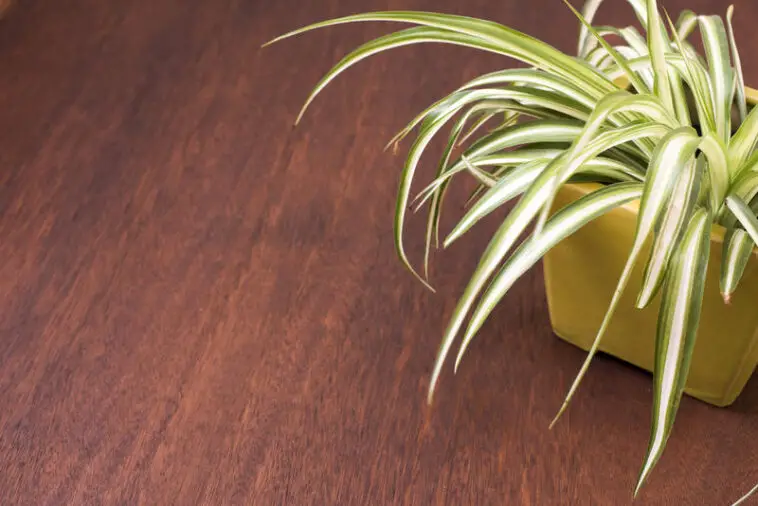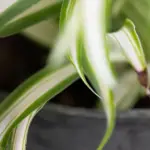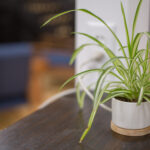If you’ve ever repotted a Spider plant and noticed it turning brown and then wondered why is my spider plant turning brown after repotting? I’m here to explain the reason behind it.
If your spider plant appears to be pushing itself out of the dirt or if you observe roots sprouting out of the drainage holes, it’s time to repot.
In the days or weeks that immediately follow repotting, your spider plant may be in an anxious period, and if things do not go according to plan, your plant may see a rapid decline in health.
It’s not always obvious why your spider plant appears to be going brown when you repot it, and it can be difficult to figure out what’s happening.
Read more: Why Are My Spider Plant Leaves Folding?
Table of Contents
Why Is My Spider Plant Turning Brown After Repotting?

It’s possible that the root structure of your spider plant was harmed during the repotting process, that it isn’t getting enough light, that it is experiencing transplant shock; that it was overwatered during the repotting process, or that it was transplanted into a pot that is too large.
However, the most common reason for a spider plant’s death once repotted is root damage sustained during the transfer.
- The enormous tuberous roots of the spider plant store water and nutrients.
- Your plant may suffer if you harm or remove too many of these roots during repotting.
- Another option is that there is too much fertilizer in the fresh potting medium.
- The presence of rich compost may result in withering or discomfort.
- It’s also possible that you overwatered it or placed it in a position that’s too shady.
Root Damage
When the roots of your spider plant are damaged during the repotting process, the plant will focus the majority of its energy on restoring its root system.
Because of this, the leaves of your spider plant may give the impression that it is becoming brown and dying.
When you transplant a spider plant from one container into another, there is always the possibility that you will cause damage to its roots. This is especially true if the plant has significantly outgrown its first container.
The process of untangling a tangled mass of roots may be challenging, and it’s common to find that you wind up breaking at least some of them as you struggle to liberate the plant from its container.
You might have to cut some roots away to pull it out, or you could snap some when attempting to place it into the fresh soil.
Your spider plant could actually profit from having some of its foliage removed if they are highly root-bound and compacted. This will allow you to encourage the main roots to stretch out and make use of the additional space that has been created.
And anyway, no one here is going to notify the spider plant that it has a new container, and if you don’t reroute its root growth, the plant might not utilize this area right away!
But, doing so is typically difficult for the plant, and if the roots are severely damaged, the spider plant may appear to be turning brown for a period of time.
If you have caused significant harm to the plant’s roots, it may even turn brown and die.
Read more: Why Are My Spider Plants Leaves Curling?
Transplant Shock
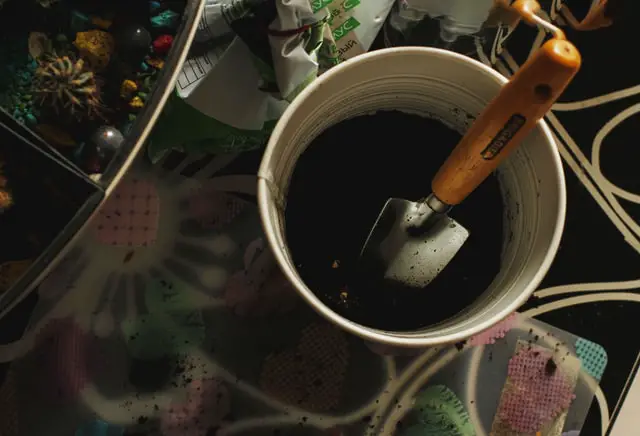
Because transplanting may also cause shock to plants, your spider plant’s growth may be stunted and it may get ill for a period of time even if its roots were not harmed in the process.
You should be careful with your plant, giving it plenty of water and making sure that it is kept in a cool place until it has been acclimated to its new pot.
It is possible that it is suffering from more than simply transplant shock if, after a week or two, it does not begin to show signs of improvement.
Read more: Should I Cut Bent Spider Plant Leaves?
Too Much Fertilizer
Fertilizing after repotting might cause problems for spider plants because they don’t appreciate a lot of nutrients in the soil.
If you plant your spider plant in very rich compost or manure, there is a chance that it will suffer as a result. However, over-fertilizing your spider plant is typically the result of a feeding routine that has become overly enthusiastic. However, it is possible that it will suffer if you over-fertilize it.
Even though fertilizer is beneficial for spider plants, these are some of the most drought-resistant plants that do not require a great deal of it in order to thrive.
If you add an excessive amount of fertilizer to the soil, you may observe that the tips of their leaves get brown.
For a period of time, your spider plant may appear to be turning brown. However, this is unlikely to kill it completely.
Excessive Water
When we move plants to a new pot, we always water them.
It keeps the root hairs cold and helps them settle into the soil, as well as ensuring that the plant gets enough water.
Because potting soil has a propensity to be dry when you first fill the pot with it, it is imperative that you water it once the plant is established in the container.
On the other hand, if you give a spider plant an excessive amount of water, the roots will rot and the plant will perish.
Read more: Why Is My Spider Plant Pale And Limp?
Drainage issues
If you have just repotted your plant and neglected to provide sufficient drainage, you may discover that your spider plant is beginning to show signs of distress as a result of being submerged in water.
This might be because it’s not draining correctly, rather than because you’re feeding it too much water.
The Pot Is Too Large
If you replant your spider plant into a container that is too large, the soil will not be able to get sufficiently dry in the intervals between waterings, which may eventually lead to the death of your plant.
When purchasing a new container for your spider plant, be sure to select one that is at least 1 to 2 inches larger than the previous one.
Poor Soil
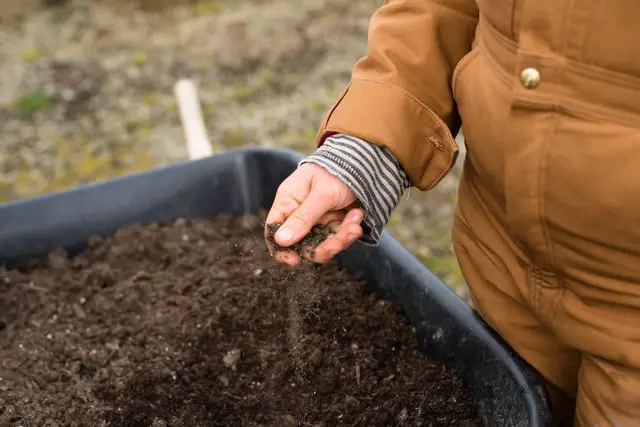
When repotting a plant, be sure to incorporate a good draining substance, such as perlite, into the compost and observe whether the soil is drying out between waterings.
You also need to be sure to use rainwater rather than tap water, but this is unlikely to be an issue when repotting!
Read more: How Do You Bring A Spider Plant Back To Life?
The Soil Around The Roots Hasn’t Been Pushed Down
After you have repotted your spider plant and added soil to the edges of the container, the next step is to make sure that the soil has been compacted around the root ball of your plant. This may be done by gently pressing your fingers into the soil around the root ball.
Once the soil has been filled in, use a wooden stick and gently push down on it to work out any trapped air.
This allows the soil to encircle the root ball and allows all of the roots to better absorb water and nutrients from the soil surrounding them.
Read more: Should I Cut The Dead Tips Off My Spider Plant?
There’s Too Much Shade
If you’re still having trouble, check to see if you moved your spider plant after putting it in a new pot.
It could have been a mistake, or it might not fit back where you had it before.
Although spider plants do not require a great deal of direct sunlight, they will not flourish in complete shade.
It can be difficult to position plants well, particularly if you have a limited amount of room and a large number of plants. Nonetheless, you should make an effort to position your spider plant in a location where it will receive a fair amount of indirect sunlight.
If your plant’s new pot doesn’t let you do this, think about moving the spider plant to a different room or even hanging the pot up somewhere to get the most light.
Because spider plants appear so attractive dangling from ceilings, you might want to use this method in order to bring them out of the shade.
Read more: Why Are My Spider Plant Leaves Creasing?
Conclusion
Why Is My Spider Plant Turning Brown After Repotting?
When spider plants are newly repotted, they should seldom become sick to the point of death, but they may appear to be turning brown for some time.
Overall, these are resilient plants that appear to be impossible to kill (unless maybe by over-watering), so allow your plant some time to settle in and examine these potential concerns in the meantime.
Even if the roots were damaged during the transfer, your plant should be alright in its new container as long as it gets decent soil, adequate light, and plenty of water.
They will eventually regrow on the plant, but it will take some time!
image by freeimageslive.co.uk – gratuit
Shrug photo created by wayhomestudio – www.freepik.com
Photo by Zoe Schaeffer on Unsplash
Photo by Anna Kumpan on Unsplash
